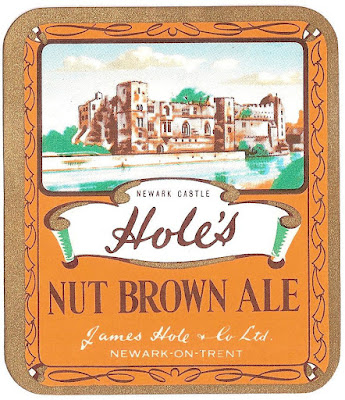Monday, 18 September 2023
The Big Six (part three)
More stuff on the demons of 1970s brewing. How evil they were. The ones who supped at the devils hosepipe. Two more Big Six members.
Courage
I have very mixed feelings about Courage. Having ended up owning both of my hometown of Newark’s brewers, they owned almost all the pubs. All but one of which sold no cask beer. On the other hand, they brewed Russian Stout.
On the other hand, my first job after school was working in their Newark plant, the former Holes brewery. Filling kegs. It was so much fun. Not really. It was very heavy work. Which my 18-iear-old body could cope with. Then there was all that free beer.
In the North and Midlands, Courage produced no cask beer at either their Tadcaster or Newark breweries. Drinkers in the South were luckier, with the London and Bristol plants producing some cask. Though Worton Grange, the replacement for the former Simmonds brewery in Reading, produced only keg beer.
Scottish & Newcastle
Due to the way the pub trade worked in Scotland, where loan ties rather than outright brewery ownership were the norm, Scottish & Newcastle looked by far the smallest of the Big Six.
Many “free houses” had some sort of loan tie to S & N. Often just for draught beer, rather than everything.
With not many more than the maximum number of brewery-owned pubs, S & N was the least affected by the Beer Orders.
Their cask beers offerings were patchy. Younger’s 70/- and 80/- appeared in natural form reasonably frequently. With the latter being called IPA in England. Just to confuse thing up.
The best-known beer of Newcastle Breweries was their Brown Ale, along with Exhibition. There was also an Anber Ale, which one of the two constituent parts of Newcastle Brown.
Courage
I have very mixed feelings about Courage. Having ended up owning both of my hometown of Newark’s brewers, they owned almost all the pubs. All but one of which sold no cask beer. On the other hand, they brewed Russian Stout.
On the other hand, my first job after school was working in their Newark plant, the former Holes brewery. Filling kegs. It was so much fun. Not really. It was very heavy work. Which my 18-iear-old body could cope with. Then there was all that free beer.
In the North and Midlands, Courage produced no cask beer at either their Tadcaster or Newark breweries. Drinkers in the South were luckier, with the London and Bristol plants producing some cask. Though Worton Grange, the replacement for the former Simmonds brewery in Reading, produced only keg beer.
Scottish & Newcastle
Due to the way the pub trade worked in Scotland, where loan ties rather than outright brewery ownership were the norm, Scottish & Newcastle looked by far the smallest of the Big Six.
Many “free houses” had some sort of loan tie to S & N. Often just for draught beer, rather than everything.
With not many more than the maximum number of brewery-owned pubs, S & N was the least affected by the Beer Orders.
Their cask beers offerings were patchy. Younger’s 70/- and 80/- appeared in natural form reasonably frequently. With the latter being called IPA in England. Just to confuse thing up.
The best-known beer of Newcastle Breweries was their Brown Ale, along with Exhibition. There was also an Anber Ale, which one of the two constituent parts of Newcastle Brown.
Subscribe to:
Post Comments (Atom)











































































3 comments:
Newcastle IPA was actually a weak pale tank beer that sat below Exhibition and McEwan's Scotch in the strength range. It was infrequently seen, last I saw of it was in the 1970s at a pub in West Denton. The other pub in the area, the Peregrine which is still going great guns, had McEwan's 80/- on handpump in around '76 where I drank before coming to Australia and it was clearly labelled as such.
Note the price list for draught and tank beers:
https://www.beeretseq.com/brewing-over-time-and-tyne/
On futher pondering and dredging of the memory banks, I wouldn't at all be suprised if the tank IPA was actually a tank version of Newcastle Amber ale, a bottled pale ale that was also a component of Newcastle Brown Ale until they moved to the Dunston brewery and brewed the "broon" as a single beer.
I remember back in the later 70s they introduced "keg amber", a dismal fizzy brew, which typically appeared in small pubs in County Durham where they were too small and too far from the then Newcastle plant to justify tanker deliveries. There was also a keg version of Exhibition. Some pubs in the old mining villages were reduced to selling just Tartan and Keg Amber.
So I'd put money on tank IPA being Amber but renamed to avoid confusion, seeing as, at that time, Amber was strictly a bottled beer.
I drank Newcastle IPA as late as 1984, at a pub in Peterlee, the Moorcock I think it was called. Quite a big and busy pub, so I expect the beer was tank. While the IPA was as weak as anything, it was not at all unpleasant. Whereas I always thought Amber was horrible, and something to drink only as a desperate last resort.
If anything IPA tasted like extremely watered down Exhibition. About 2 parts Ex to one part water would have been about right.
Post a Comment